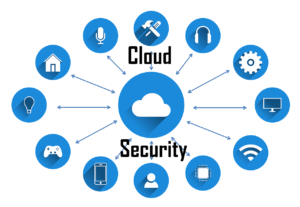Research Areas






Artificial intelligence (AI) is the capacity of a computer to accomplish activities that are typically performed by people. Content analysis, augmented reality, virtual reality, mixed reality, supervised voice processing, and computer vision are just few of the areas in which Metaverse conducts AI research and application.
A nation-state or international organisation engages in cyber warfare by attacking and disrupting the computer systems or information networks of another country. To prevent and mitigate cyberattacks, human analysts’ expertise and experience are still vital. However, machine-learning AI-based cyberattack detection technology is becoming more and more successful.
Cyberspace and its numerous networks, such as the Internet, have become critical to a number of industries, corporations, and military throughout the world. However, even while countries have sought to address issues linked to cyber governance by building national-level procedures, the very transnational aspect of cyberspace has prompted the international community to discuss and create norms or laws that should encourage good behaviour in cyberspace.”
The goal of reactive cybersecurity is to protect a company against cyberattacks and respond to bad characters that have already infiltrated the network.
Using conditional threats and coercion, deterrence attempts to persuade the other party to behave in a desired manner. In cyberspace, the restrictions of deterrence theory are significant.
The metaverse is a digital world that merges virtual and augmented reality into a single environment. With the metaverse’s unique personality and the data it creates, hackers will have a wide range of possibilities.
Corporate espionage and cyber-espionage, as well as insider threats from inside and outside the business, will always pose a danger to national security.
Cybersecurity is endangered by technological advances. Indeed, the latest developments in defense practitioners’ defensive techniques feel a sense of loss. In addition, the intensity and amount of cyber threats has escalated as defensive strategies and technologies operate in a never-ending loop.
There has been a rising urgency among governments and businesses throughout the world to protect vital infrastructures from cyber-threats. In an environment where cyber safety is a concern, it is critical to develop novel and adaptable ways to traditional computer security.
The origins of human space exploration provide insight into today’s security issues, especially as they affect and inflict constraints on logistics and supply chain management operations that may create obstacles for efficiency. The observation and experience from space over the millennia has inspired approaches to improve security and decrease vulnerabilities while easing logistics and supply chain management instruction.
Home internet users, corporations, and national security and defence systems are all vulnerable to cyber-attacks as our world becomes more interconnected via information technology. In order to protect the country against cyberattacks, it is necessary to raise public awareness of cybersecurity concerns and expand the number of educated cybersecurity professionals.
The use of new technology to teach cybersecurity principles is becoming more important as more people work and learn from home. Consequently, researchers have developed an augmented reality-based cybersecurity education platform to expose users to a variety of cyberattacks.